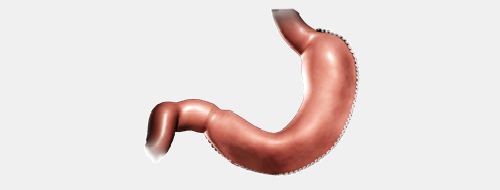
Sleeve Gastrectomy


Sleeve Gastrectomy

One advantage of the sleeve gastrectomy is that it does not involve any rerouting of the intestine so there is low risk for post-operative vitamin deficiency.
The average stomach can hold 1 -1 ½ quarts of food at a time. In the sleeve gastrectomy procedure, the stomach is trimmed to make it skinny and have the shape of a banana. The unused excess stomach is then removed. As a result, patients will feel full after eating small portions of food. So they will eat less.
Since there is no bypass with this operation there is also no decreased calorie absorption after meals. So even though patients will eat smaller meals, they will absorb all of the calories from those meals, unlike the gastric bypass.
Our experienced surgeons routinely perform this operation in less than one hour and the hospital stay is usually only one night. Recovery time is 1-2 weeks. Risks of surgery include bleeding, leakage, blood clots, and reflux symptoms.
On average, patients see a 27 – 41 kg weight loss in the first year after surgery. The majority of patients with diabetes, hypertension, sleep apnea, and high cholesterol will experience resolution of these diseases after surgery. Here are some other bariatric surgery options that you and your doctor will consider together during your thorough consultation.